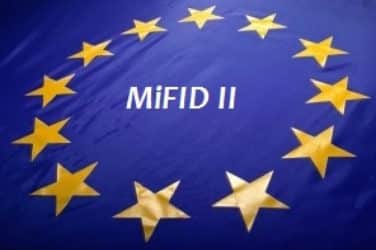Meeting MiFID II’s Best Execution Challenges
In our last blog, we saw how today’s shifting political and commercial landscape is creating an atmosphere of uncertainty when it comes to complying with the EU’s Markets in Financial Instruments Directive (MiFID) II.
However, not all ambiguities surrounding MiFID II can be blamed on external factors like Trump and Brexit. Many statements in the new regulation remain short on detail and long on interpretation, with several short phrases that belie huge amounts of work and investment.
When ‘sufficient’ just isn’t enough
Best execution is one key tenet of the EU’s forthcoming regulation that remains rather nebulous. Under MiFID II, firms are expected to take “sufficient steps” to ensure the best possible execution outcome for clients.
Precisely what ‘sufficient’ means is not yet fully understood. Certainly, MiFID II’s best execution requirement will hold affected firms to far more rigorous standards than its predecessor. Under MiFID I, firms could merely explain their execution policy to clients – whether it was the volume weighted average price (VWAP) or some other straightforward benchmark.
However, it seems probable that firms will face a significant obligation to collect, store and – when required – present regulators with all the data pertaining to how a given trade was executed. For many firms, this will force a rethink of their existing transaction cost analysis (TCA) monitoring tools and the collection of transaction histories going back as far as seven years.
As a result, data collection and data quality will play a crucial role in MiFID II’s best execution requirement. Firms must retain records relating to the entire trade lifecycle and be able to reconstruct transactions upon request. This in turn drives the MiFID II demand for highly granular time-stamping of order and transaction data, which firms need to put in place using sophisticated monitoring systems.
With so many questions still surrounding best execution, it’s no surprise that it’s seen as a leading challenge by market practitioners. A recent poll of A-Team Group’s Intelligent Trading Technology community found that 27 percent of participants saw best execution as their primary concern. When ancillary issues like time-stamping and algorithm tagging/testing are also factored in, this figure jumps to more than 50 percent. Clearly, meeting the best execution requirement will be a mainstay of overall MiFID II compliance.
With MiFID II due to come into force in January 2018, the clock is ticking. While all the questions may not yet be answered, firms need to put themselves in the strongest possible position to be ready in time. This is not simply a question of fines and penalties. In fact, some firms already regard optimised best execution processes and other aspects of MiFID II compliance as a very real source of competitive advantage.
Can colocation aid compliance?
For many market participants, colocation and proximity hosting have already become essential components of their trading systems. With the arrival of MiFID II, this trend looks set to go into overdrive because colocation can help firms conquer some of the most significant compliance challenges, particularly when it comes to best execution.
Location and latency
With latency playing a significant role in every firm’s ability to execute according to a client’s wishes, proximity and high-performance links to a myriad of exchanges and liquidity venues will become more essential than ever.
As liquidity fragments across new venues, firms will need to assess the optimal physical location for their execution servers across a range of asset classes. Colocation with established Regulated Markets may need to be supplemented with additional hosting facilities that support low-latency connectivity to related venues to execute complex multi-leg strategies competitively and in compliance with MiFID II.
Capitalising on the cloud
Many firms are finding that key aspects of MiFID II can be implemented on an ‘as-a-service’ basis, using cloud technologies for remote access. According to the A-Team survey, 60% of respondents saw at least some value from cloud in their compliance efforts, with 30% expecting cloud to contribute significantly to their MiFID II solutions.
In colocation data centres like ours in central London, businesses can create and manage private VLAN links to multiple clouds through a single, secure connection. The savings from not owning or hosting the additional infrastructure needed to meet MiFID II’s best execution, transparency and monitoring requirements can greatly reduce the total cost of compliance.
Value-added services
From atomic time-stamping to algorithm testing, colocation also brings access to a wide variety of expert, value-added services. With a broad mix of exchanges, ISVs and service providers just a cross-connect away, colocating alongside a strong community of financial firms in the same facility will make it vastly easier to on-board the new capabilities MiFID II demands, at speed and at scale.




